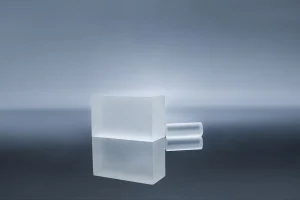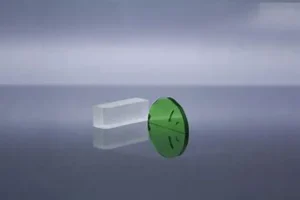Introduction
In the realm of high-performance nonlinear materials for laser systems, Potassium Dihydrogen Phosphate (KDP) crystals have carved a unique niche. With their diverse applications and unmatched benefits, they are undeniably a game-changer in the field. This article delves into the dynamic world of KDP crystals, unraveling their applications, benefits, and the reason behind their unparalleled excellence.
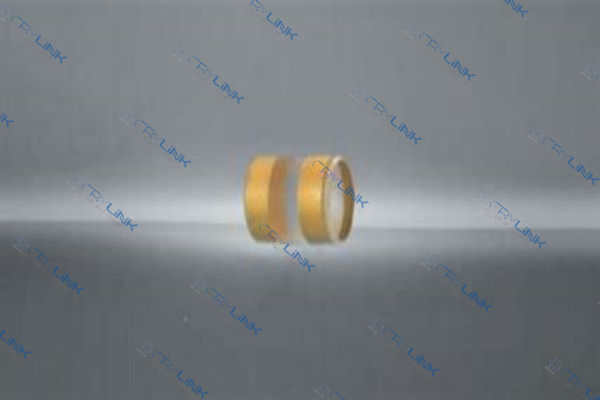
Potassium Dihydrogen Phosphate (KDP) Crystals: A Primer
KDP crystals are highly sought after in the field of nonlinear optics due to their wide-ranging applications. They are primarily utilized for frequency conversion, optical parametric oscillation, and electro-optic modulation. These crystals are acclaimed for their high nonlinear coefficients, a wide transparency range, and excellent optical quality. Their unique properties make them exceptionally suited for specific applications such as frequency doubling, optical parametric amplification (OPA), and Q-switching.
Applications in Nonlinear Optics
Frequency Conversion
Frequency conversion is an integral operation in optical applications, and KDP crystals serve as the linchpin in this process due to their impressive nonlinear optical properties. This process essentially involves changing the frequency of light when it interacts with a nonlinear optical medium, such as a KDP crystal. Thereby, frequency conversion enables the transformation of the spectral content of light, making it an indispensable tool in a plethora of optical applications.
For instance, frequency conversion is widely used in laser technologies, allowing laser light with one frequency to be transformed into a different frequency. In the world of high-precision scientific research, for example, frequency conversion can provide researchers with different colors of laser light required for investigating molecular structures or quantum states.
KDP crystals prove ideal for frequency conversion owing to their high nonlinear coefficients. In essence, the higher the nonlinear coefficient of a material, the more efficient it is in changing the frequency of light passing through it. This makes KDP crystals particularly well-suited to frequency conversion tasks, as they can alter the frequency of light more efficiently than many other nonlinear optical materials.
Another advantage of KDP crystals in frequency conversion is their wide transparency range. A broader transparency range signifies that the crystal can effectively transmit a broader range of light frequencies without significant loss or distortion. This aspect allows KDP crystals to be employed in frequency conversion across a wide array of light wavelengths, from ultraviolet to far infrared, thereby providing a level of versatility that is highly beneficial in numerous optical applications.
The combination of these properties – high nonlinear coefficients and a wide transparency range – means that KDP crystals can facilitate more efficient, effective, and versatile frequency conversion. This is essential in today’s world, where varied and flexible laser output is necessary in numerous industries and fields of study, from telecommunications and materials processing to medicine and scientific research.
As the development and refinement of nonlinear optical materials continue, KDP crystals are set to play an even more vital role in the process of frequency conversion. Advancements in crystal growth techniques, phase matching technology, and other related fields will further enhance the performance and versatility of KDP crystals in frequency conversion applications. Such progress will pave the way for new, innovative optical technologies and applications that will shape the future of laser technology and photonics.
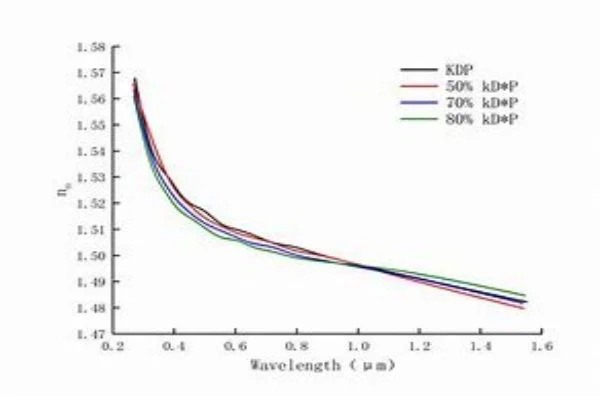
Optical Parametric Oscillation
Optical parametric oscillation (OPO) is a critical process within the realm of laser physics and nonlinear optics. OPOs, as the name suggests, operate on the principle of parametric processes. The operation begins when a high-energy photon (known as the pump photon) interacts with a nonlinear medium, like a KDP crystal, and splits into two lower-energy photons. These photons, known as the signal and idler, carry less energy but the total energy and momentum are conserved in the process. This results in the generation of light with different frequencies, which can be tuned according to the needs of specific applications.
The role of KDP crystals in this process is multifaceted and vital. Given their high nonlinear coefficients, KDP crystals facilitate efficient interaction between the pump, signal, and idler photons. This property allows for effective photon splitting, making KDP crystals an optimal choice for OPO systems.
The wide transparency range of KDP crystals further enhances their suitability for OPOs. It ensures that a broad spectrum of light, extending from the ultraviolet to the far infrared, can be effectively used within the OPO process. This broad range enhances the flexibility of OPOs and allows for a greater variety of output frequencies, making KDP crystals invaluable for tasks that require a broad tunability of light frequencies.
Furthermore, the excellent optical quality of KDP crystals ensures that the beam quality is preserved during the OPO process. This is of significant importance as the optical quality of a crystal can greatly influence the performance of OPO systems, particularly in terms of beam quality and conversion efficiency.
The application of KDP crystals in OPOs is not limited to laboratory-based research or scientific exploration. These applications can be found in a variety of industries, including telecommunications, medical imaging, environmental sensing, and even defense, where the ability to generate and tune different light frequencies can be used to great effect.
Continued advancements in the field of nonlinear optics and the production of high-quality KDP crystals promise even more exciting possibilities in the future. As we push the boundaries of what’s possible with OPOs, KDP crystals will likely continue to be at the forefront, helping to drive innovation and expand our understanding of the world around us.
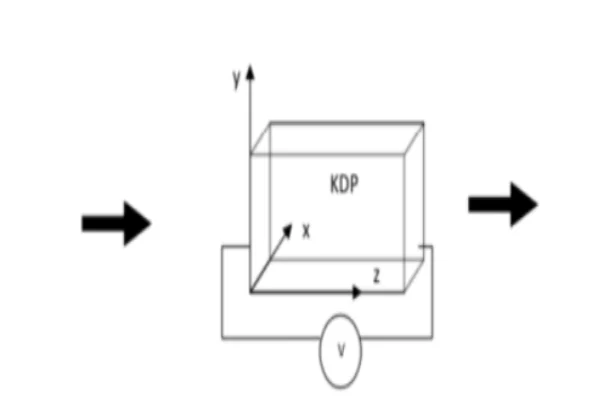
Electro-optic Modulation
Another significant application of KDP crystals is in electro-optic modulation. This process involves using an electric field to modulate the phase, polarization, or amplitude of a light beam. Given their high electro-optic coefficients and excellent optical quality, KDP crystals are preferred for this application.
Key Benefits of KDP Crystals
KDP crystals offer a plethora of benefits, setting them apart from other nonlinear materials. These include high nonlinear coefficients, a wide transparency range, and excellent optical quality.
High Nonlinear Coefficients
One of the prime benefits of KDP crystals is their high nonlinear coefficients. This property plays a crucial role in the efficiency of frequency conversion processes, making these crystals an invaluable asset in nonlinear optics.
Wide Transparency Range
KDP crystals also boast a wide transparency range. This property enhances their versatility, enabling their use in a broad spectrum of light, from the ultraviolet to the far infrared.
Excellent Optical Quality
In addition to their impressive technical specifications, KDP crystals also offer excellent optical quality. This quality ensures minimal distortion of the light beam, ensuring high performance in all applications.
Specific Applications: Where KDP Crystals Excel
KDP crystals excel in specific applications, such as frequency doubling, optical parametric amplification (OPA), and Q-switching. These applications leverage the unique properties of KDP crystals, resulting in superior performance.
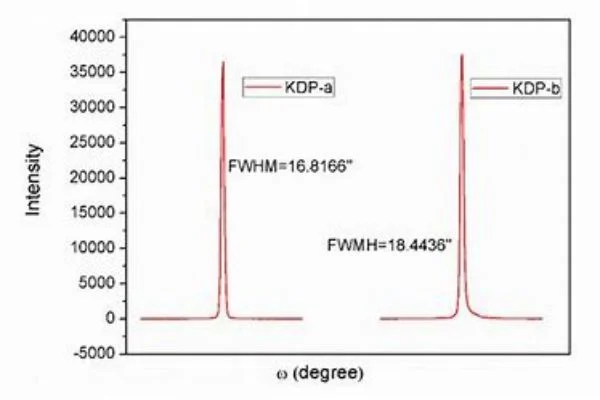
Frequency Doubling
Frequency doubling, otherwise known as second harmonic generation, is a fascinating optical process with far-reaching implications. In this phenomenon, two photons with the same frequency combine to produce a new photon with double the frequency. For instance, a green light laser pointer uses this process to convert the infrared light from a diode laser into green light. This conversion is achieved through the utilization of nonlinear materials, specifically KDP crystals, which are instrumental in this process due to their high nonlinear coefficients.
The procedure of frequency doubling is both intricate and delicate, necessitating a careful understanding of the light’s phase matching. Phase matching is the synchronization of the input and output waves to optimize the frequency doubling process. Nonlinear materials such as KDP crystals, with their high nonlinear coefficients, allow this process to occur more efficiently and with greater precision.
Phase matching in frequency doubling is an art and a science, requiring precision, understanding, and careful control of the conditions. When a laser beam passes through a KDP crystal, it undergoes changes in speed due to the crystal’s refractive index. By adjusting the angle of the light entering the crystal, or the temperature of the crystal, a condition of phase matching can be achieved. In this state, the maximum amount of the fundamental frequency is converted into the second harmonic, effectively doubling the frequency.
However, the use of KDP crystals is not confined solely to frequency doubling. With their wide transparency range, they can be employed across a vast array of light wavelengths, extending their utility beyond the visible spectrum. Furthermore, their excellent optical quality allows for a minimal loss of beam quality throughout the frequency doubling process.
Innovations in the preparation and use of KDP crystals have increased their efficacy and made them more accessible for frequency doubling applications. Advancements in growth techniques have resulted in larger and purer KDP crystals, which offer improved performance. The development of better phase matching techniques has also made the process more efficient and reliable.
In conclusion, KDP crystals play a critical role in the process of frequency doubling. Their high nonlinear coefficients, wide transparency range, and excellent optical quality make them an invaluable asset in the field of nonlinear optics. As technology continues to advance, and our understanding of these materials deepens, we can anticipate the evolution of more sophisticated applications and methods that leverage the unique properties of KDP crystals. It’s an exciting time to be in the field of laser technology and nonlinear optics, with KDP crystals playing a central role in this vibrant area of research.
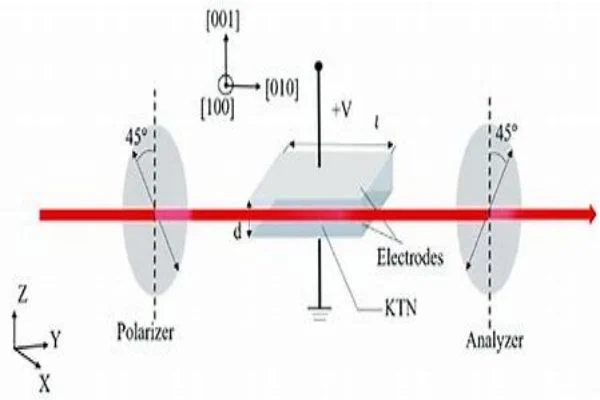
Optical Parametric Amplification (OPA)
KDP crystals are also excellent candidates for optical parametric amplification (OPA). This process involves amplifying a signal wave using a pump wave and an idler wave, both of which are derived from the same crystal.
Conclusion
The advancements in KDP crystal technology have revolutionized the landscape of laser systems. With their unique properties and extensive range of applications, KDP crystals have proven to be one of the most high-performance nonlinear materials in the industry. As our understanding of these crystals continues to grow, so too will their potential applications, solidifying their place at the forefront of laser technology.
FAQs
- What are KDP Crystals? KDP (Potassium Dihydrogen Phosphate) crystals are a type of nonlinear material used in laser systems. They are known for their high nonlinear coefficients, wide transparency range, and excellent optical quality.
- How are KDP crystals used in frequency conversion? KDP crystals are often used in frequency doubling, where they convert an incoming laser beam into one with double the frequency. This process is crucial in many laser applications.
- What is the role of KDP crystals in optical parametric oscillation? KDP crystals are used in optical parametric oscillation to convert an incoming pump wave into signal and idler waves. This process allows for the amplification of the signal wave, providing an adjustable light source in various laser systems.
- What makes KDP crystals unique? KDP crystals stand out due to their high nonlinear coefficients, wide transparency range, excellent optical quality, and high laser-induced damage thresholds. These properties make them ideal for use in high-power laser systems.
- In which specific applications do KDP crystals excel? KDP crystals excel in applications such as frequency doubling, optical parametric amplification (OPA), and Q-switching. These processes are essential in many laser systems and rely heavily on the unique properties of KDP crystals.


